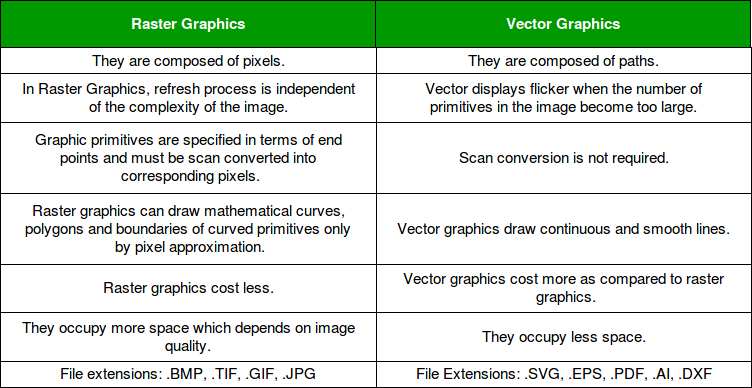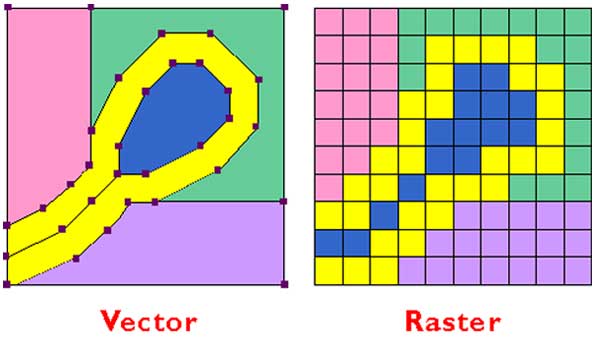

- #Programs using vector graphics vs raster graphics software
- #Programs using vector graphics vs raster graphics code
They are resolution-independent – you can resize vector graphics without quality loss or risk of visual artifacts. Vector images aren’t pixel-based, which means they aren’t constrained when it comes to resizing. Vector graphics are generated using mathematical formulas that translate into points, lines, and curves aligned on a grid. Photo by Randy Fath on Unsplash What Are Vector Graphics?


This is a significant factor that tips the “raster art vs vector art” scale in favor of vector graphics when it comes to the digitalverse. The number of pixels in any raster graphic is fixed, which means any attempt to resize/scale up will result in distortions and/or a blurry visual, as the system cannot create extra pixels out of thin air. The detailed nature of pixel-based graphics that makes breathtaking visuals possible is the same reason that they’re not a top choice in terms of scalability, web performance, and by extension, versatility. The web is immersed in raster visuals, from stunning landscapes captured in the wilderness to digital realities brush-stroked into existence.
#Programs using vector graphics vs raster graphics software
Video recordings, digital product photography, complex graphics, and any visuals created using pixel-based software are all ultimately raster files.
#Programs using vector graphics vs raster graphics code
Each pixel will translate into an area of illumination on a display screen, and its color will be dictated by the color code it’s assigned. Raster graphics are composed of a rectangular array of regularly sampled values, aka pixels. Let’s get right into it! What Are Raster Graphics? Vector Animation vs Raster Animation: The Tie Breaker.Raster Art vs Vector Art: The Similarities.Raster Graphics vs Vector Graphics: The Differences.When all is said and done, you’ll be able to effortlessly identify exactly when to use vector vs raster, based on your project’s ground plan. We’d like to take you on a beyond-surface-level journey into the subject. Still testing the waters in all the niches that graphic design encompasses? Then this post should help you get that first bit of second-guessing out of the way. Understanding the particularities of both these graphic formats, and how these details impact your deliverables, will help you confidently navigate the world of digital art. Working with graphics in a digital space comes with the expectation that you become familiar with the vector vs raster conversation.


 0 kommentar(er)
0 kommentar(er)
